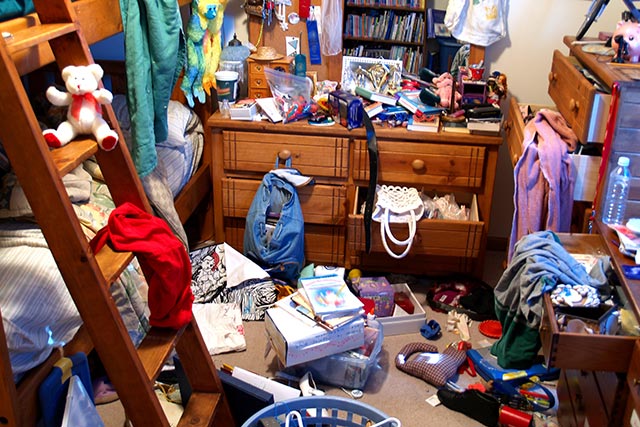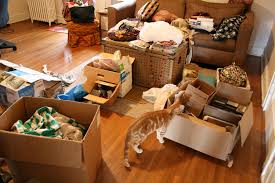6 Secrets All-Inclusive Resorts Won’t Tell You
Posted by Editor in Uncategorized on Apr 17th, 2019 | Comments Off on 6 Secrets All-Inclusive Resorts Won’t Tell YouSummer is just around the corner, and it’s that time of the year again when people travel for a well-deserved vacation. Don’t just pay for that lackluster trip. Find out for yourself whether that all-in package is truly worth the expensive price or not by keeping these things in mind.
- They are rarely ‘all-inclusive’
To see if you are priced fairly, compare you all-in hotel fee to the standard room rate without the other services. Some resorts budget around S$200 per person a day for meals and leisurely drinks under their all-inclusive deals. Ask yourself if you really consume that much to find out if the package is worth getting.
- Discounts could be because of unfavorable factors
Ongoing renovations are not mentioned in resorts’ marketing materials, so confirm with your hotel or risk enduring noise and dust your entire vacation. Another reason why hotels offer discounted all-in packages is the invite more guests during off-peak seasons, such as hurricane season in western countries. While you might have saved a lot from your package, you may not enjoy the place as much because of natural disasters.
- Brochure photos are always edited
Scanning and browsing through photos in brochures and websites of hotels would give you the impression that they offer five-star amenities and services. While your all-in package brochure gives you pictures of plush rooms and pristine beaches, we also recommend checking travel websites for un-retouched images of your resort for comparison.
- Food-borne illnesses is quite common
Be careful with what you eat by avoiding lukewarm offerings and drinks that have been left out for hours when dining in buffets. Diarrhea happens on one in every four travelers, so it is imperative to be mindful with the food and always bring anti-diarrhea meds wherever your go.
- A healthcare insurance will give you peace of mind
In relation to number 4, opt for an enhanced medical coverage to get you covered against any illnesses or accidents incurred during the trip. Secure a medical coverage that arranges a doctor’s visit to your own hotel room, instead of you going to the hospital.
- The cheaper hotel nearby offers the same beach as your luxe hotel
Before booking that posh hotel, find out first if there are more affordable hotels nearby. Expensive resorts and cheaper hotels usually share the same stretch of beach. If you are visiting the place mainly for the beach and doesn’t mind skimping on fancy amenities, you’ll save a lot of cash with the more affordable option.
An all-inclusive vacay may seem like a more convenient option, but a little research won’t hurt.
Top 4 Tips to Make Intermittent Fasting Easier
Posted by Editor in Uncategorized on Apr 17th, 2019 | Comments Off on Top 4 Tips to Make Intermittent Fasting EasierIntermittent fasting is the newest diet plan right now. As what the name implies, it is a type of diet where you fast for a certain set of time, typically between 16 to 20 consecutive hours; and you eat during the other four to eight hours of your day. The exact time you start and end your fasting is up to you. But the most common for 16-hour fasting is the 8pm to 12nn of the next day. You can only start eating again in the next eight hours after 12nn, but you can have coffee, tea or water during your fasting hours.
It may sound a lot to stop yourself from craving anything solid for 16 hours, but really it is just a matter of mind setting. To further help you shave off those extra pounds, here are some tips to make intermittent fasting a lot more bearable.
- Start fasting after dinner
Have your dinner around seven in the evening. If you wake up at seven in the morning, you are already in your 11th hour of fasting and just five hours away from your first meal. Scheduling your fast at bedtime makes it easier for you to curb your cravings since you’re asleep most of the hours.
- Squeeze some lemon into your water
During those fasting hours when you’re awake, drinking water with lime or lemon can also help control your sweet cravings. You may also have a cup of tea or coffee. After a few weeks, your system will get used to these, reducing frequency of craving for anything sugary.
- Eat more protein during meal times
Once your fasting ends, do not binge eat. Still, prioritize healthy eating to maximize the results. Minimize intake of foods made with processed sugars and carbohydrate. Instead, focus on consuming more protein from pork and beef as this helps you stay full for longer hours. Get a dose of your healthy fats from fish almonds and avocadoes’ and healthy carbs from fruits and veggies.
- Schedule your fast only twice a week
Fasting for 16 hours twice a week already cuts your calorie intake by 30 percent. Fasting more than that would reduce your calorie intake even more, causing lack of energy and strength and making you prone to over eating.
Intermittent fasting does not have to feel like torture. These tips are just some of the many different ways to make this diet plan manageable and more effective. Feel free to play around and incorporate just one or two of these tips into your diet. If you find these tips making intermittent fasting more convenient, then you would enjoy the diet plan in a way you would want to continue doing it.
3 Big Reasons to Start Fermenting Vegetables
Posted by Editor in Uncategorized on Mar 18th, 2019 | Comments Off on 3 Big Reasons to Start Fermenting VegetablesModern civilization has given us everything we need and want to make everyday life so much easier, from the electricity and running water we currently enjoy, to the refrigerators and coffee that we use nearly every day.
However, it also has its downsides, not just on the environment around us, but on the environment that’s inside us as well – and this is where fermenting food comes in.
Why Ferment?
Fermentation has been a way to prepare and extend the shelf life of food, even before refrigerators were around.
With natural fermentation, food is broken down into a more digestible form while still retaining its nutrients, and even introduces vital enzymes, such as b-vitamins, and probiotics that are good for your gut.
Here are the biggest reasons why you should start fermenting vegetables at home:
- Fermented Foods Are Easier to Digest
Food is broken down and made easier to digest through fermentation, which is great for those who are suffering digestive problems. This is possible since the bacteria will break the food down using a process that doesn’t involve oxygen or air.
- They Balance Your Gut Flora
Fermented foods are good for you not just because they’re easier to digest, but they also contain healthy bacteria and yeast strains that your gut needs to produce and process nutrients that your body can’t.
One vital product that’s produced during the fermentation process is lactic acid, which your body burns to give your muscles more energy and reduces your tendency to suffer from muscle cramps.
- They’re Easy to Prepare
Any food that you prepare yourself will taste better than the food that you would just normally buy. Even if you don’t cook regularly, fermentation is something you’ll be able to appreciate since it will last you a long time.
Fermenting vegetables is also easy to do – all you really need is a clean jar with a lid and a mix of water and sea salt (or any other type of unrefined salt). Once the bacteria has finished fermenting them, you’re done!
Not only is fermenting your own food natural and easy to do, but fermented foods can also be kept at room temperature while still retaining their long shelf life (which can last for months), especially when compared to other foods that spoil faster and more easily.
Additionally, fermenting vegetables can save you a lot of money, especially if you’re on a tight budget and have to cut down on buying a lot of groceries. There’s also no reason to not start doing it since there are all kinds of fermented dishes you can start making.
How to Let Go of Your Perfectionism (And Why You Should)
Posted by Editor in Uncategorized on Mar 18th, 2019 | Comments Off on How to Let Go of Your Perfectionism (And Why You Should)Being a perfectionist might sound like a positive thing at first – after all, why would you settle for only less than perfect?
However, it turns out that that very mindset might just be what’s holding you back from even trying again or giving it your all. In fact, it can just as easily be a real problem that keeps you from sharing your less-than-perfect work to people.
If you happen to be stuck on this mindset (and can’t seem to make anything), then now is the perfect time to let go – and here’s how you do it:
Accept that all great things start out less-than-perfect.
The first attempt at anything is never usually good, and the myth that masterpieces can come out at a snap is just a myth.
Most of the time, perfectionism stems from a deep-seated fear of failure. But the good news is that you can overcome this fear.
Instead of thinking of the first try as less than what you wanted, you can change the way you think. Once something is out there, instead of simply existing in your head, it becomes much easier to improve with time and effort.
Don’t be scared of feedback.
All great ideas have to come from somewhere, and are usually put into the open where people can give their feedback and criticisms.
And because something can take so much time and effort to do or create, it’s understandable why it can be difficult to show off for the world to see. However, when it comes to criticism, you don’t always have to take everything to heart.
In fact, once you realize that the worst thing someone can do to your work is criticize it, you’ll realize that criticism and feedback is a great way to improve.
Put in the time and the effort in whatever you do.
People don’t usually see the multiple failed attempts it took to get to that one successful attempt, but it’s clear that the best works that stand the test of time are those that have a lot of time and effort put into them.
Focus on improving the work and getting the skills you need to do so, and everything else will follow on their own.
If something doesn’t work the first time, or even after several times, it helps a lot to take a step back and find out why. You might want to take a short break to give yourself some distance or to recover, but whatever you do, it’s important to keep going at it.
At the end of the day, it’s all how you approach the tasks and the mindset you approach them with. Embrace constant improvement instead of the need to be absolutely perfect. When you’re more accepting of failure, it’s only then that the results will really start to show.
The Biggest Reasons Why You Keep Clutter at Home (And How to Part With it For Good)
Posted by Editor in Uncategorized on Feb 22nd, 2019 | Comments Off on The Biggest Reasons Why You Keep Clutter at Home (And How to Part With it For Good)Like most people, there’s a good chance you will wake up one day to find that your living space is cluttered, but even when you’re trying your best, you simply can’t bring yourself to open certain boxes or get rid of certain items for good.
Believe it or not, things can still be considered clutter even though they are properly arranged, and you don’t want to throw them away for one reason or another.
But the good news is that there’s a way to deal with it. These are the biggest reasons why you keep clutter in your home – and what you can do to maximize your space:
1. You like free stuff
Who doesn’t? The main appeal of having stuff is the feeling that you spent less – or in some cases, nothing at all – for something that is, or could be, valuable. When the items you purchased this way start piling up at home, they become “bargain clutter”.
To get rid of bargain clutter, ask yourself if you would buy these items even if they weren’t at a discount or free. If not, let it go.
2. You keep it around “just in case” you need it
The concept of “being prepared” is quite common, and for many people, stocking up on varying household items in bulk can save a lot of trouble later on – that is, if they are actually used when the situation calls for it.
But there is a fine line between stocking up for emergencies and plain, simple over-abundance.
The rule of thumb to getting rid of over-abundance is that if you haven’t used it in over three months or don’t plan to use it within the next three months, you should get rid of it. If you will use it only for a short time and never again, try renting it instead.
More importantly, buy only the things that you need, and avoid perishable items unless you plan on using or consuming them before they expire.
3. Your clutter has sentimental value
All kinds of items can be keepsakes and hold sentimental value to different people, especially in the case of heirlooms. However, as much as these items hold value, they can also easily add clutter at home.
How do you know if it’s sentimental clutter? Keep these in mind the next time you come across them when you’re trying to clean your room or your home:
- Is it related to an important event?
- Is it related to a person (i.e. someone famous or someone close to you, such as a friend or a family member)?
The good news is that if something holds value to you or if it’s too important, there’s no need to throw it away, but instead, you should store it properly in a dedicated storage container to keep it in good condition.
(Disclaimer: this list is compiled in no particular order.)
5 Not-so-Obvious Places in Your Home That You Need to Clean
Posted by Editor in Uncategorized on Feb 22nd, 2019 | Comments Off on 5 Not-so-Obvious Places in Your Home That You Need to CleanEven though you make it a habit to clean your house and make it as dust-free as possible, there’s a good chance you’ll end up missing a corner or two. When this happens, dust can easily accumulate and spread back throughout your whole home before you know it.
To keep dust from coming back to your home too quickly, here are a few places you should be looking into more often when cleaning your home:
- Areas beneath your furniture
You can find dust bunnies and cobwebs lurking in almost every nook and cranny imaginable, so it’s no surprise that places underneath your furniture, especially your tables, would be hiding a lot of dust.
If you have a closet at home, you especially need to pay attention to where you place your footwear and clean it regularly, since soles can trap all kinds of dirt and dust when you keep them inside.
- Air filters
While it does help to improve the air quality in your home, there’s also no better hotbed of dust particles, mold, algae, and bacteria than a filter that traps them for an extended period of time.
If you have an air filter at home, make it a point to clean them regularly to maintain your air quality and prevent triggering other people’s allergies.
- Indoor plants
Whether they’re real or made of plastic, your indoor plants could also be home to a lot of dust, especially those with large, broad leaves.
To keep them dust-free, spritz their leaves with water and wipe them with a clean cloth every few days, and pay close attention to their soil.
Indoor plants are best placed in areas where they get the best amount of sunlight while away from things that could trip them over and spill their soil, which can lead to dust and dirt getting into the house.
- Walls and ceilings
Dust and cobwebs don’t just cling to corners – they can also cling to walls and even ceilings, especially if they have lots of tiny nooks and corners that don’t get cleaned regularly.
When cleaning your walls and ceilings, start with the top and work your way to the bottom with using a broom or duster that traps dust particles before finishing with a vacuum.
- Carpet
Your carpet may seem like an obvious place where dust could easily accumulate, but what you may be forgetting is how quickly it does, and how frequently you need to clean it as a result.
As much as possible, vacuum it once a week with a beater brush attachment and spray it with a fabric sanitizer. It also helps to have it steam-cleaned by a professional laundry service at least once a year.



















